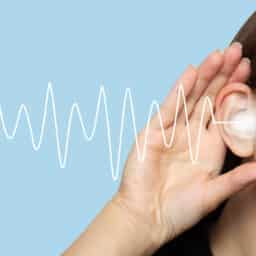Hearing Aid Care During the Rainy Season
Winter in Portland means shorter daylight hours and more rain. If you’re a hearing aid user, you know that you need to keep water away from your hearing aids, but there’s not much you can do about the rain. 28.8 million Americans could benefit from hearing aids, so let’s cover some basic hearing aid protection…
Tips for Adjusting to Your New Hearing Aids

Congratulations on your new hearing aids! We’re excited to be a part of your journey to better hearing health. Now that you’ve got your hearing aids, it’s time to begin the adjustment process. Hearing aids present a massive change, and you’ll discover that it may take a few days or weeks for your brain to…
Listening Fatigue and New Hearing Aids
Using new hearing aids for the first time—whether it’s your first pair or an upgrade—comes with an adjustment period. This adjustment period can last anywhere from a few days to weeks, and it can be challenging for a while. Let’s discuss some expectations of the adjustment period, specifically regarding a phenomenon known as “listening fatigue.”…
Headphones and Hearing Aids: What You Need to Know
Hearing aid technology has come a long way in recent generations. Modern hearing aids are sophisticated and capable communication tools, with many features and settings designed to keep you connected to the world around you. In our increasingly digital culture, staying connected involves audio, video and streaming as well as face-to-face communication. So if you’re…
Tips for Navigating Airport Security with Hearing Aids
Air travel is stressful—as much as 40% of the American population reports being afraid of flying—and that stress iscompounded if you’re one of the millions of Americans who use hearing aids. Navigating airports requires extra consideration and preparation for those with hearing aids. We’ve put together some valuable tips for the next time you travel….
Experience Clearer Sound with Modern Hearing Aids

Hearing aids have come a long way in recent years, offering more than just amplified sound. Modern devices now feature advanced technologies designed to improve sound quality and comfort, with feedback cancellation being one of their most notable advancements. What Is Feedback and How Is It Controlled? Feedback occurs when sound from the hearing aid’s…
What to Know About the Different Types of Hearing Devices
Most people immediately think of hearing aids when it comes to treating hearing loss. They’re the most effective solution and nearly 29 million Americans could benefit from using them, but they are not the only option. From everyday amplification tools to specialized support systems, understanding these options can help you make informed decisions that align…
The Path of Sound: How We Hear and What Can Get in the Way

Hearing is something we often take for granted. It feels effortless—like flipping a switch. But in reality, sound takes a remarkable journey before it reaches your brain. Understanding how sound moves and what can interrupt it is key to recognizing hearing loss and taking steps to address it. How Sound Travels to Your Brain Think…
Seven Signs It’s Time To See a Hearing Specialist

Hearing health is something many people forget about until they start to notice signs of hearing loss. While it’s easy to push it aside, prioritizing regular checkups with a hearing specialist is key to detecting issues early and preventing further damage where possible. Let’s look at seven signs that indicate it’s time to schedule an…
Four Reasons Your Hearing Aid is Whistling

Feedback occurs when the microphone reamplifies a sound into your hearing aids causing an unpleasant whistling noise. It can occur occasionally when you’re putting your hearing aids on in the morning or taking them out at night. However, if you are regularly experiencing feedback when going about your day or having a latte with friends…


